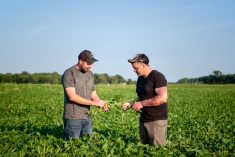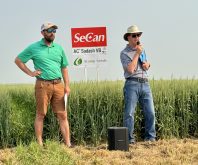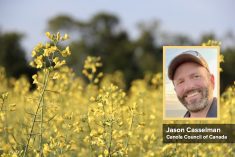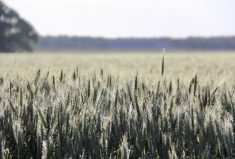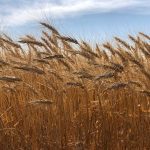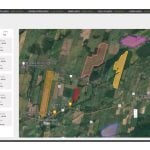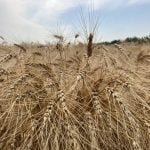Glacier FarmMedia – When it comes to on-farm decision making, the bottom line for most farmers is often, well, the bottom line.
A 2019 survey of Manitoba farmers bore that out. The survey, conducted on behalf of the Manitoba Pulse and Soybean Growers, asked farmers which factors were important to them when planning their crop rotations.
Yield potential (84 per cent) and economics (78 per cent) were ranked among the highest on a list of eight factors affecting crop rotation decisions by producers.
Read Also

The wildly adaptable side of next gen agriculture
Some people just fall into the world of agriculture — and consider themselves lucky to have stumbled into such a…
Therefore, it was a no-brainer that net revenue was one of four key areas studied by researchers involved in the Resilient Rotations project, the first phase of which wrapped up earlier this year.
The aim of the comprehensive five-year study was to evaluate various cropping rotations to help create more productive, sustainable and resilient cropping rotations on the Canadian Prairies.
It was managed by the Western Grains Research Foundation’s Integrated Crop Agronomy Cluster, with research conducted by Agriculture and Agri-Food Canada (AAFC) along with several universities and industry partners at seven field sites in Manitoba, Saskatchewan and Alberta.
Sheri Strydhorst, a former agronomy research scientist in Alberta who served as an extension specialist for the project, says net revenue was chosen as a central area of focus because it is a critical metric for farmers in their decision-making process.
“The thing that farmers said in our survey was a top reason that would encourage them to diversify their rotation was having better net economic returns,” she says.
“This is the driving factor of decision making on the farm in terms of what rotation farmers will put into play. I think that’s why this net return piece is absolutely critical.”
Kui Liu, an AAFC researcher based in Swift Current, Sask., who headed the project, says revenue was one of three pillars used to determine the viability of different cropping systems. The others were productivity and environmental sustainability.
Six different rotation types were tested in three different regions to determine their economic viability: the northern and southern Prairies in Alberta and Saskatchewan (2018 to 2021) and Manitoba’s Red River Valley (2019 to 2022). The six rotation types were categorized as control, intensified, diversified, market driven, high risk and soil health.
Revenue minus costs
Net revenue for each of the rotations was calculated by determining the total value of yield based on average crop prices from 2012-21 and then subtracting total costs.
Total costs, with averages calculated during the same period of time, included all expenses such as seed, fertilizer, chemicals for weed and disease controls, fuel and oil, repairs, land investment, machinery costs including interest and depreciation and labour.
Mohammad Khakbazan, an AAFC researcher based in Brandon, Man., whose work focuses on economics, says crop insurance was not included as one of the costs because researchers wanted to determine the true effect of different rotations on revenue. Crop insurance would have skewed the results.
Strydhorst says the crop species for each rotation were “geographically relevant” and therefore varied between the sites. While a crop like corn was used in the Red River Valley where it is well adapted, it wasn’t chosen in the northern Prairies region where it isn’t suited to growing conditions.
While results varied among test sites, a recurring theme within the net revenue portion of the study was that input costs for the market-driven rotations were the highest and rotations for soil health had the lowest input costs.
Strydhorst says the higher input costs for the market-driven rotations can be attributed to higher nitrogen fertilizer costs since they received 1.2 times the recommended rates of nitrogen. Conversely, the soil health rotations had lower input costs since they included a green manure component that reduced fertilizer requirements.
Southern Prairies
The southern Prairies region included test sites in Lethbridge, Alta., and Swift Current.
The four-year control rotation used there consisted of fallow, followed by durum, malt barley and, finally, durum. The intensified rotation consisted of lentil, durum, chickpea and durum, while the diversified rotation was comprised of lentil, canola, pea and durum.

The market-driven and high-risk rotations varied slightly between the two sites. The market-driven rotation in Swift Current included flax, wheat, lentil and feed barley while its counterpart in Lethbridge contained canola, wheat, wheat and malt barley.
The high-risk rotation featured soybean, canary seed, faba bean and durum in Swift Current with corn substituted for canary seed in Lethbridge. The soil health rotation included forage pea for green manure, barley and pea as an intercrop, another intercrop of faba bean and barley and durum.
All rotations studied at Lethbridge posted negative returns. Strydhorst attributes that to drier-than-usual growing seasons in 2018-21.
“The study was conducted in four years of really tough growing conditions,” she says, adding that there was no crop insurance income to rely on.
Similarly, three of the rotations (control, soil health and high risk) studied at Swift Current posted negative net returns. However, the intensified rotations studied there and at Lethbridge appeared to perform better compared with the other rotations.
Khakbazan attributes the performance of the intensified rotations to inclusion of crops that traditionally perform well in the region, such as chickpeas and lentils, which produced net revenues of $600 and $350 per hectare, respectively.
“The intensified rotations definitely had the best economic returns (in the southern Prairies),” Strydhorst says. “That is also the common rotation in the area. Maybe this study is justifying what the current practices are on a lot of the acres.”
Liu says results in the southern Prairies showed the challenges farmers had to deal with because of dry conditions. They also show the importance of adopting a diversified cropping system to help deal with such a moisture imbalance, he adds.
Northern Prairies
The control rotation at the two Alberta locations in Beaverlodge and Lacombe included wheat, pea, wheat and canola, while the intensified system was comprised of wheat, canola, wheat and canola. The diversified rotation was pea, winter wheat, faba bean and canola.
A market-driven rotation consisted of canola, malt barley, canola and canola while the high-risk rotation featured flax, soybean, durum and canola. A soil health rotation was comprised of forage pea for green manure, winter wheat, faba bean and canola.

At the two Saskatchewan test sites in Melfort and Scott, the control rotation included canola, wheat, pea and wheat while the intensified rotation featured canola, wheat, canola and wheat. A diversified rotation featured pea, winter wheat, faba bean and canola while a market-driven rotation was comprised of oat, canola, wheat and canola in Melfort and canola, canola, green pea and canola in Scott.
The high-risk rotation at the two Saskatchewan sites included flax, soybean, durum and canola while the soil health rotation featured forage pea for green manure, winter wheat, faba bean and canola.
The market-driven and diversified rotations had the highest net returns while the soil health rotations consistently had the lowest.
Strydhorst says a recurring theme in the northern Prairies was that rotations with more wheat and canola generally pushed net economic returns higher. However, she cautions that market-driven rotations with canola in three years of a four-year cycle is a risky agronomic practice because of increased disease risk.
Diversified rotations in Beaverlodge and Melfort also produced higher returns. Khakbazan says that was driven in Beaverlodge in large part by high yields and strong prices for peas and faba beans, while in Melfort, high canola and wheat yields and prices were largely responsible.
Strydhorst says another factor in the success of the diversified rotations was the nitrogen-fixing capabilities of peas and faba beans that can help reduce input costs.
“If there’s a theme here at the end of the day, I think it’s that where you have crop types that are well adapted and yield well, you’re going to get higher net economic returns,” she says.
Red River Valley
The Red River Valley test site, near the town of Carman, Man., tested a control rotation of wheat, soybean, wheat and canola and an intensified rotation of soybean, wheat, soybean and canola. In addition, a diversified rotation featured canola, winter wheat, soybean and canola while a market-driven rotation was comprised of corn, corn, oat and canola.
A high-risk rotation included corn, dry bean, canola and sunflower, while a soil health rotation featured green manure, fall rye, corn-soybean and canola-pea intercrops.
The market-driven and high-risk rotations posted the most profitable net returns of the rotations tested in Carman. Strydhorst says the net returns associated with those two mostly relate to high corn yields during the study.
“If there’s one simple take-home (message) from this region, it’s that high corn yields in this environment were equalling high net economic returns,” she explains.
The one downside in terms of the market-driven rotation is that it also had the highest input costs, a fact Strydhorst says isn’t surprising.
“Sometimes it takes money to make money.”
The Manitoba portion of the study was conducted in drier-than-normal conditions, which Khakbazan says likely played a role in poor performance in some of the other rotations. For example, canola delivered a negative return in each of the five rotations.
What’s next?
Although the Resilient Rotations project has wrapped up for now, Liu and his colleagues hope to get funding to extend their research for another five years. They hope to compile results in normal or wetter conditions to provide growers with a more complete picture of what works and doesn’t work when it comes to cropping choices.
Liu says while the dry conditions the Prairies endured during the first phase of the study made his team’s work more challenging, they also presented a unique opportunity to study how cropping systems respond to abnormal drought conditions.
“I think producers should remember they are not farming for one or two years — they are farming for the long term and crop rotations are a wise long-term investment,” he says. “They should try reaching a balance — consider both their economic situation as well as their long-term soil health investment.”
– Jim Timlick is a reporter for Grainews. His article was originally published in the Aug. 22, 2023 issue.



